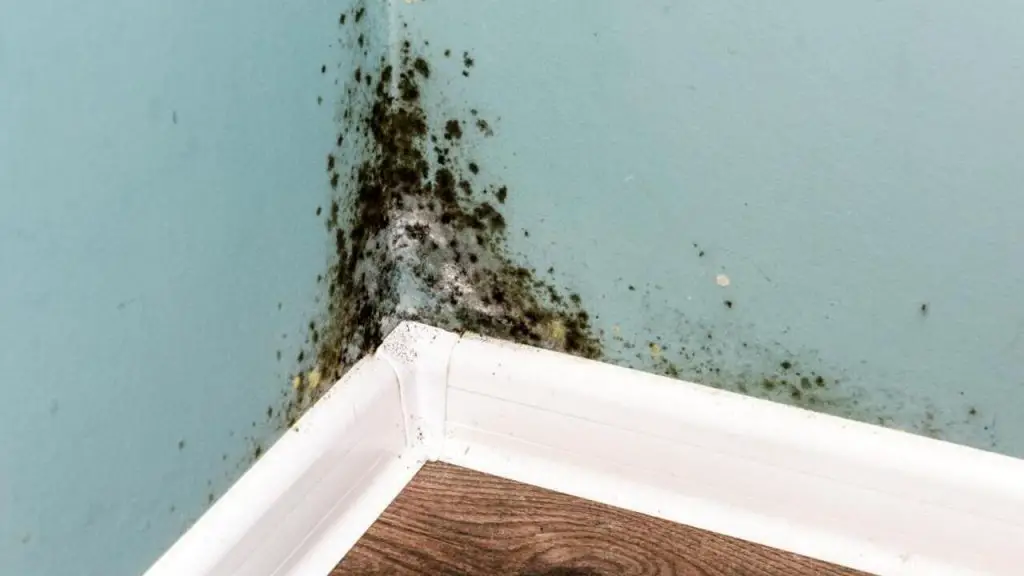Mold, the scourge of homeowners and the bane of exorcists, is a fungal growth that can appear in a number of colors, including black, white, green, or orange. It thrives in moist environments and feeds on organic matter, such as wood or paper.
Mold spores are present in the air and can enter your home through open windows or doors, vents, or cracks and crevices. Once it takes hold, mold can quickly spread through your home, resulting in costly damage. So how long does it take for mold to grow? Let’s take a closer look.
What Is Mold And Where Does It Come From?

Most people have heard of mold, but few know what it actually is. Mold is a type of fungus that thrives in damp, dark environments. It typically grows on organic materials like wood, paper, and cloth.
When mold spores land on a suitable surface, they begin to grow and reproduce. Mold colonies can range in size from a few centimeters to several meters. Some molds also produce toxins, which can cause health problems in humans and animals.
Mold spores are found everywhere, both indoors and outdoors. They can enter your home through windows, doors, or ventilation systems. Once inside, they will start to grow if the conditions are right. For example, if there is high humidity or water damage present.
To prevent mold growth, it is important to keep your home clean and dry. You should also repair any leaks or water damage as soon as possible. If you do find mold growing in your home, you should remove it immediately to prevent the spread of spores.
How Long Does It Take For Mold To Grow?
Many people are concerned about mold growth in their homes, but they may not know how long it takes for mold to start growing. In general, mold spores need three things in order to start growing: food, moisture, and a warm temperature.
While mold can grow on almost any type of food, including paper and dust, it prefers organic materials like wood, cloth, and food scraps. As far as moisture is concerned, mold can grow in both high and low-humidity environments. However, it is more likely to grow in high-humidity environments because the spores need water to germinate.
Finally, most types of mold prefer warm temperatures (between 77 and 86 degrees Fahrenheit), but some can survive in cold climates.
With these conditions met, mold spores can start growing within 24 to 48 hours. However, visible mold growth may not appear for days or even weeks.
As a result, it is important to be diligent about checking for mold growth if there is any suspicion that these conditions may be present in your home.
Health Risks Associated With Mold Exposure
Although often thought of as nothing more than a nuisance, mold can pose a serious health risk to humans. Mold spores are present in the air around us and are generally harmless. However, when they land on a damp surface, they can begin to grow and spread.
In some cases, mold growth can occur within 48 hours. Mold thrives in moist, dark environments and can often be found in basements, bathrooms, or anywhere else that is subject to flooding or leaks.
Exposure to mold can cause a variety of health problems, including respiratory infections, asthma attacks, and skin irritation. In some cases, exposure to mold can even lead to cognitive impairment or death.
Therefore, it is important to be aware of the risks associated with mold exposure and take steps to prevent mold growth in your home or office.
What Should You Do If You Think You Have A Mold Problem In Your Home?
If you think you have a mold problem in your home, there are certain steps you should take to resolve the issue.
First, it is important to identify the source of the mold. This can be done by looking for signs of moisture, such as water stains or musty odors. Once the source of the moisture has been identified, it is important to address the issue to prevent the mold from returning. In some cases, this may involve repairing leaks or increasing ventilation.
Additionally, it is important to clean any areas that have been affected by mold. This can be done with a variety of household cleaning products.
Last, it is essential to take steps to prevent mold from returning in the future. This means keeping your home clean and dry and addressing any sources of moisture as soon as they are discovered. By taking these steps, you can effectively resolve a mold problem in your home.
Steps That Homeowners Can Take To Prevent Mold Growth In Their Homes
Mold is a type of fungi that thrives in damp, dark environments. Although it can be beneficial in some contexts (such as the production of cheese and antibiotics), it can also be a major problem for homeowners.
Mold growth can cause structural damage to homes, and it can also lead to health problems for residents. Fortunately, there are a number of steps that homeowners can take to prevent mold growth in their homes.
One of the most important things that homeowners can do to prevent mold growth is to control moisture levels. This means fixing any leaks in the home, using exhaust fans in bathrooms and kitchens, and venting clothes dryers to the outside. It is also important to clean up any water spills quickly and to dry wet areas thoroughly.
In addition, it is important to keep the home well-ventilated by opening windows and doors on a regular basis.
Another key step in preventing mold growth is to clean regularly and thoroughly. This means dusting and vacuuming on a regular basis, and deep-cleaning all surfaces at least once a month.
Homeowners should also be careful about what they bring into the house, as mold spores can hitch a ride on clothing, shoes, and pets. Finally, it is important to have any mold growth promptly removed by a professional.
By taking these steps, homeowners can greatly reduce the risk of mold growth in their homes.
Additional Contents


